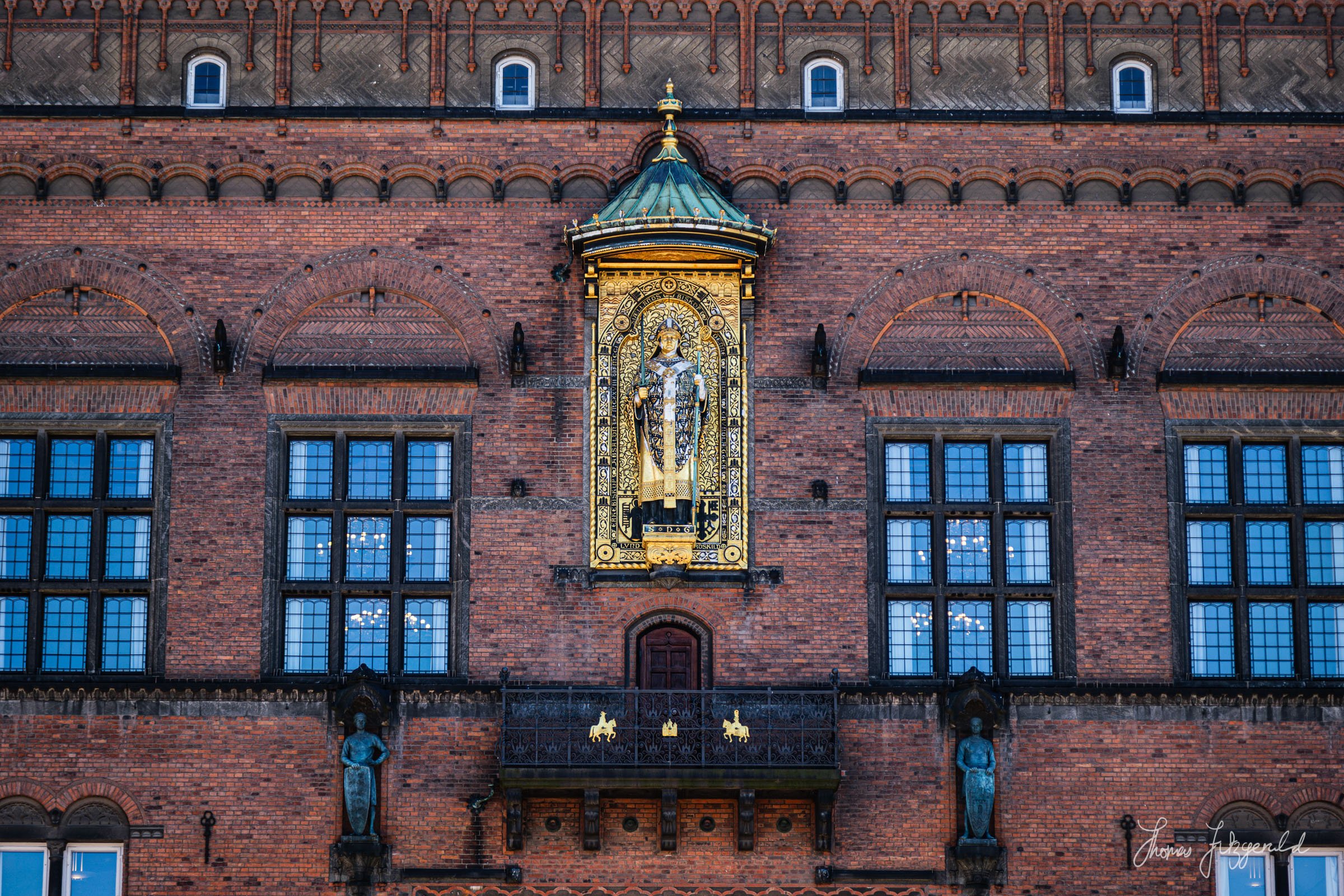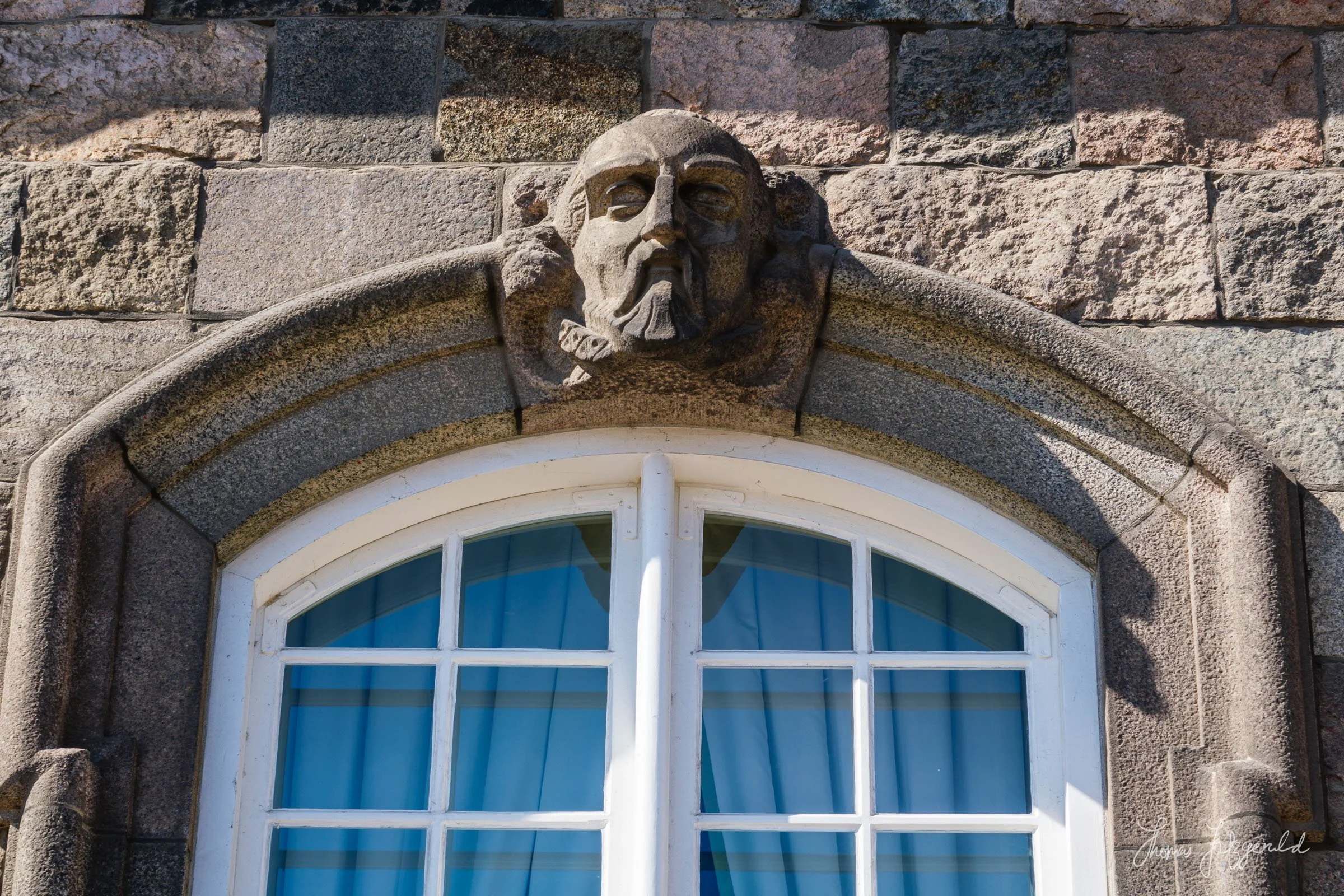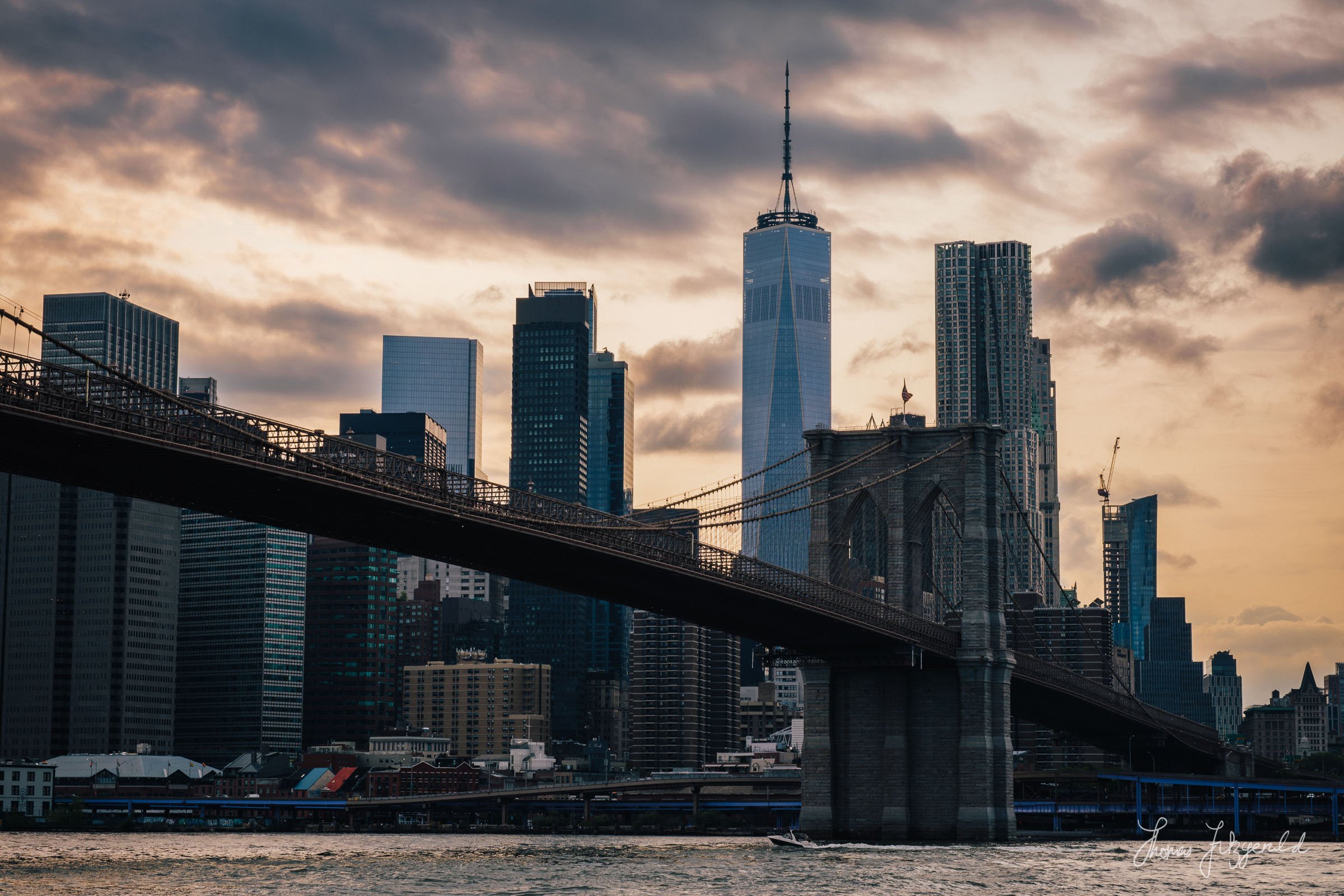A Personal Review of the Fujifilm 16-80mm lens
The Fujifilm Fujinon 16-80mm lens is one I’ve wanted for a long time, but it has been surprisingly difficult to get hold of here in Ireland. Ever since it came out, the standalone version has been back-ordered, and it was only really available here as part of a kit. I finally managed to get one second hand a couple of months ago, and I’ve been using it a lot since, including taking it on several trips. So, I wanted to do a non-technical review of this lens for those who might be interested.
About this review
Some people love detailed technical reviews. They love having MTF charts to pour over, and they love seeing lots of crops of the centre and edges at various apertures and focal lengths. This will not be one of those reviews. I will cover the technical aspects of the lens briefly, and I will post a few crops, but I want to focus more on what it is like for the average user who just wants to know if it’s good enough for them. (TL;DR - it is, but with a few caveats). Instead, this is more of a diary of my personal experiences using it.
I also would like to point out that for the images I shot as part of this review, I have used a Fujifilm X-E4 exclusively.
Fuji 16-80mm at 80mm f/4
Initial Reaction
When I first got the lens, I was excited. Then I was disappointed. Then I was perplexed. Then I was excited again. It was quite a rollercoaster, but let me start at the beginning.
I managed to finally get hold of one of these, as a used one turned up in a local camera shop. I went to have a look, and it was in perfect condition, so I snapped it up right away.
I had a couple of things I wanted from this lens, and a few things I wanted to try out. In particular:
- I wanted to see how it compared to the 18-55 kit lens
- I wanted it for the extra 2 mm at the wide end, as I much prefer 16 mm to 18 mm. I also wanted it for the longer telephoto reach.
- I wanted to see how it compared to the Sony 16-70 mm lens, which has some good points but is also quite problematic.
- I wanted to see how it was for video.
When I tried it out first, I had some good and bad results. At the wide end, it was very sharp and detailed, and it was sharp from wide open, improving as you stopped down. At the telephoto end, however, it wasn’t great. My initial shots were pretty soft, and I was quite disappointed. I tried stopping down a stop or two, but it only improved slightly.
I was beginning to regret my purchase, but I kept shooting with it anyway. After I had some more exposures under my belt, I noticed something interesting. You could get quite sharp shots at the telephoto end, but that sharpness, was often either in front or behind the subject you were focussing on. The other weird issue was that it was perfect when shooting video.
Fuji Focussing Weirdness & Optical Quality
After doing a bit of research, I found that some others had similar problems. For whatever reason, the lens seems to miss focus when using it at the telephoto end. Now, you might say, this is a calibration error, but mirrorless cameras don’t have the same kind of calibration issues that DSLRs did. After doing some more research, people said that if you can improve it by making the focus box larger – as in, significantly larger. So, I tried that and low and behold, it worked… well, most of the time.
Here’s an example. In this case I set the focus point to be on the flowers towards the bottom right…
Here’s where I focussed (click to view larger)
But here is what was in focus. This wasn't user error, unless I’m doing something really stupid. As I was checking focus on the camera, I shot this multiple times all with similar results. This is just one example.
The thing is, I’ve always found this to be a bit of an issue with Fuji cameras. I’ve noticed this all the way back to my X-Pro1. While lots of reviews always talk about focus tracking speed and accuracy of continuous focus, they rarely talk about basic single point autofocus. In my experience, depending on the subject, Fuji’s focusing system will occasionally be off in its focus plane. I’m not talkinga. ahuge amount - not enough to be out of focus, but enough for the subject to be soft. This is especially true when you’re trying to shoot a small subject, or if there’s something in the foreground or background. In the past, I've solved this problem by reducing the size of the focus box so that it isn’t covered by anything else, but that didn’t seem to work in this point. According to a few of the posts I saw on the subject, they recommended the opposite, to make sure the box completely covers whatever your subject is. So maybe I’ve been doing it wrong all these years, but it had worked for me the other way until this point.
The weird thing is, it's fine for most local lengths wider than about 70 mm on this lens, so something isn’t quite right. Anyway, by using a larger box, it’s much improved. It will still be off now and then, but it’s much better. You could argue that it’s a bad copy, but other people have had similar experiences – so possibly there is a bad batch out there. Perhaps it is a combination of X-E4 and this lens? I don’t know – I can only report my own experiences.
In this example, I was focussing on the crown. I shot it at two different focal lengths….
Crop at 70mm (click to view larger)
Crop at 80mm - notice how it’s softer
Having said all that, I still find it a little soft at the telephoto end of the lens. It’s not bad, or unusable by any means, but it’s still a little soft, especially when you compare the results to the wide end of the range.
On the wide side, there aren’t really any issues. It’s sharp and has good contrast. It’s comparable to any semi-pro level lens on most other camera systems. I would say it keeps this high-quality sharpness and detail until about 50 mm, then it gets a little softer until about 70 mm, and the softest being between 70 and 80 mm. I haven’t tried the f/2.8 Fuji high end 16-55 mm zoom, so I can’t directly compare, but if I consider how it performs against full frame zooms that I have used, such as the Canon 24-105 or the Nikon 24-120. I would say, apart from the 70-80mm range it’s roughly on par in terms of sharpness, but those lenses have better transmission. (And yes, I know this isn’t really a fair comparison)
I haven’t really noticed any chromatic aberration to speak of, and if there is any it’s taken care of by either in-camera processing or in Lightroom’s built in ca reduction. I didn’t specifically disable it to do testing because as I said at the start of this post, it’s not that kind of review. If you google reviews of this lens, you can find plenty of detailed technical tests.
The only significant downside I see to this lens, apart from the issues getting it to nail focus at the telephoto end, is that the f/4 focal length, while still pretty good, will give you the depth of field equivalent of f/6 on full frame. This means that you can find it harder to get separation between your subject and the background at times. And you absolutely do notice it, especially if you’re used to using a full frame equivalent (I use the Nikon 24-120 f/4 on my D700). It’s not a fault of the lens, obviously, but it would be great if someone could make an f/2.8 version of this lens, even if it did cost an arm and a leg. I’m kind of nit-picking here, though.
Shot at 80mm f/4
Travelling with the Fujinon 16-80mm
I’ve been travelling quite a bit over the past few months, and so this was a perfect opportunity to test out the lens in combination with my Fujifilm X-E4. Mounted on the X-E4, the 16-80 looks quite large, but it’s actually reasonably well-balanced, so it’s not totally ridiculous. The overall combination is still quite compact compared to the same setup on a full frame camera or even a DSLR, so it’s quite a neat travel solution. All the rings are quite smooth on this lens, and it feels quite well-made, so zooming or manually focusing is solid.
The range is great for travel. I really like having the 16 mm on the wide end. For me, having a 24 mm full frame equivalent is a much better solution than having a 28 mm equivalent, which is what you get with an 18 mm lens. When shooting cities, you get a “just wide enough” solution that works in most situations, and any wider, and you would have to switch to an ultra-wide, but I like not having to change lens when I’m just out exploring a city.
On the telephoto end, the 80 mm is equivalent to 120 mm on full frame, which is long enough for most medium-distance situations, although a longer telephoto range would be nice. However, in my opinion, it’s fine when combined with the 16 mm on the wide end. I would rather have a shorter telephoto and the 16 mm on the wide end than use something like the 18-135, which would sacrifice the wider focal length for longer reach.
Still, over multiple trips, I found it more than adequate for my needs. I travelled to Copenhagen, Stockholm and NewYork and I found it worked well for the type of photography I was doing. I never once felt the need to have a different lens, although to be fair, I wasn’t really doing anything that challenging. All in all, it’s a good compact package for travelling.
Sample Photos
Click to view larger
Compared to the Sony 16-70 mm
A while ago, I wrote a review of the Sony 16-70 mm, and it’s perhaps the closest Sony equivalent to this Fuji lens. The Sony, however, is a bit older, but I thought a quick comparison would be worth a mention.
The Sony is definitely sharper in the centre, especially at its longest focal length, however, the Sony suffers from a lot of issues. At the edges of the frame it’s soft to the point of being unusable in certain situations, and at longer distances it tends to bloom, especially at longer focal lengths.
The Fuji, on the other hand, while it has some softness at the edges, it’s not nearly as noticeable as the Sony, and while it is a little soft at 80 mm, that softness is relatively consistent across the frame. I would absolutely take that over the Sony’s somewhat maddening optics. (Maddening because it can be so good in the centre of the frame in the right circumstances, and so terrible at other times)
Using the Fujifilm Fujinon 16-80mm For Video
One of the other reasons I wanted the 16-80 is to have a good lens for shooting video. Apart from the afore mentioned focal range, the lens also comes with a built-in optical stabiliser, which is pretty much essential when shooting video with the Fuji X-E4. Because that camera lacks IBIS, you really need some degree of stabilisation in the lens.
While I didn’t really use it to shoot any proper “films” or even YouTube content while travelling, I did shoot a lot of clips with the lens, and I have to say, I’m impressed. In a way, I nearly think it works better for video than it does for stills. The video was sharp and crisp, and the stabiliser did a pretty OK job for the most part. Below is a sample I put together from some shots I took while in Brooklyn of the river traffic on the east river. This is mostly straight out of the camera, and there has been no post stabilisation on any of it.
Conclusion
Overall, it’s a fine lens. At first, I was a little disappointed as I struggled to get sharp results at the telephoto end of the zoom range, but once I figured out a way around this issue, I’m much happier. Unless you’re shooting in demanding professional situations where you need absolute sharpness, this lens is more than good enough for most of your needs. Having said that, while I have used it for client work, I’m uncertain if I would consider it a “pro” lens. (Do Fuji consider it a pro lens?). It’s a great travel lens, and a great walk around lens.
It’s also excellent for video, and if you’re primarily shooting video, I would heartily recommend it. In fact, I think it’s better as a video lens than a stills lens. It’s a little large on a compact body like the X-E4, but it’s not unbalanced and works quite well. I don’t really do star ratings, but If I did, I would give it 4 out of 5 stars. It looses points in my opinion for being soft on the telephoto end.
Help Support the Blog
Check out my Capture One Style Packs
If you’re looking for some Film Effect, or black and White style packs for Capture One, check out my Capture One styles on my Gum Road Store.
Buy me a coffee!
If you’d rather not use Patreon, but still want to say thanks or help, then you can feed my caffeine habit and buy me a coffee via PayPal with a one off donation to my PayPal tip jar.
Join our Facebook Group
If you want to discuss anything you’ve read here on my website, or saw on my youtube channel, or if you want to share images you’ve created using any of my techniques or presets, then I’ve started a new Facebook Group just for that.
Note that this post contains paid affiliate links. We get a small commission for purchases made through these links, which helps run this site.








































